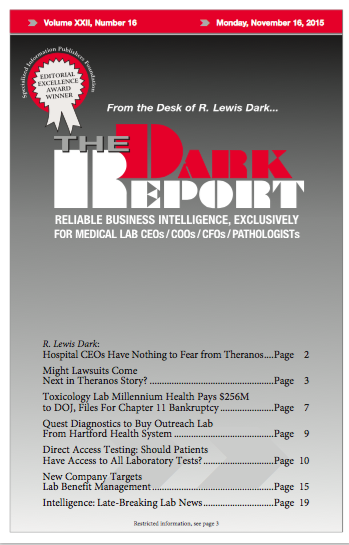Tailored to the needs and interests of lab administrators and pathologists, THE DARK REPORT provides new insights into the continuing saga of Theranos. A stream of headline stories in recent weeks has painted the controversial lab testing company in an uncomplimentary way, and TDR puts you front and center in these important developments. Have you been …
Might Lawsuits Come Next in the Theranos Story? Read More »
To access this post, you must purchase The Dark Report.


